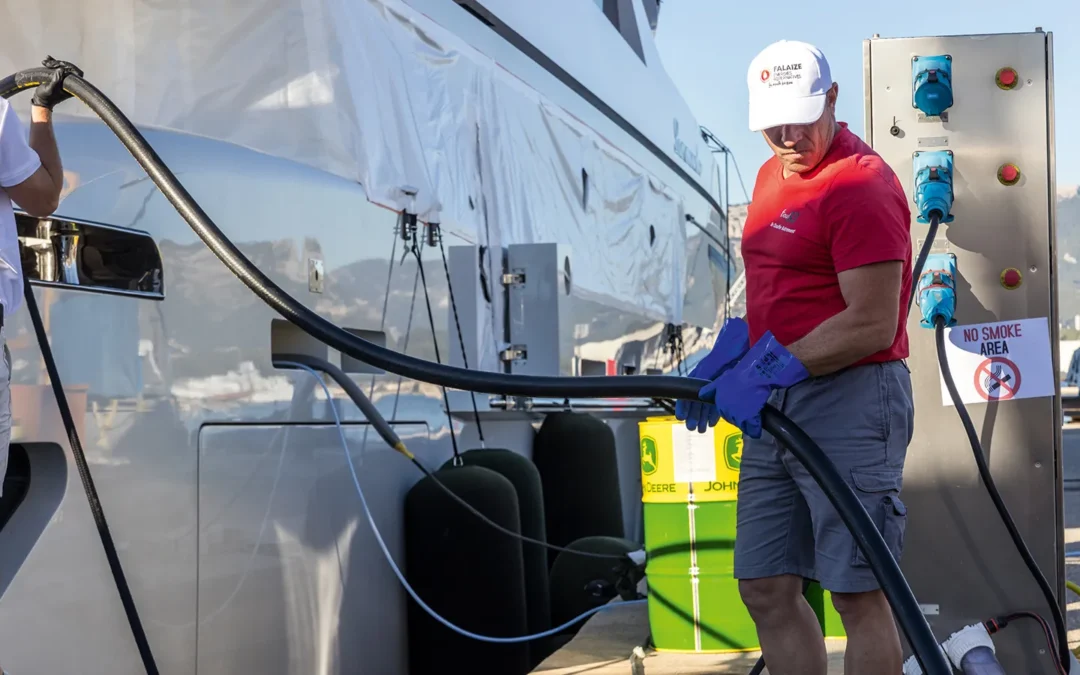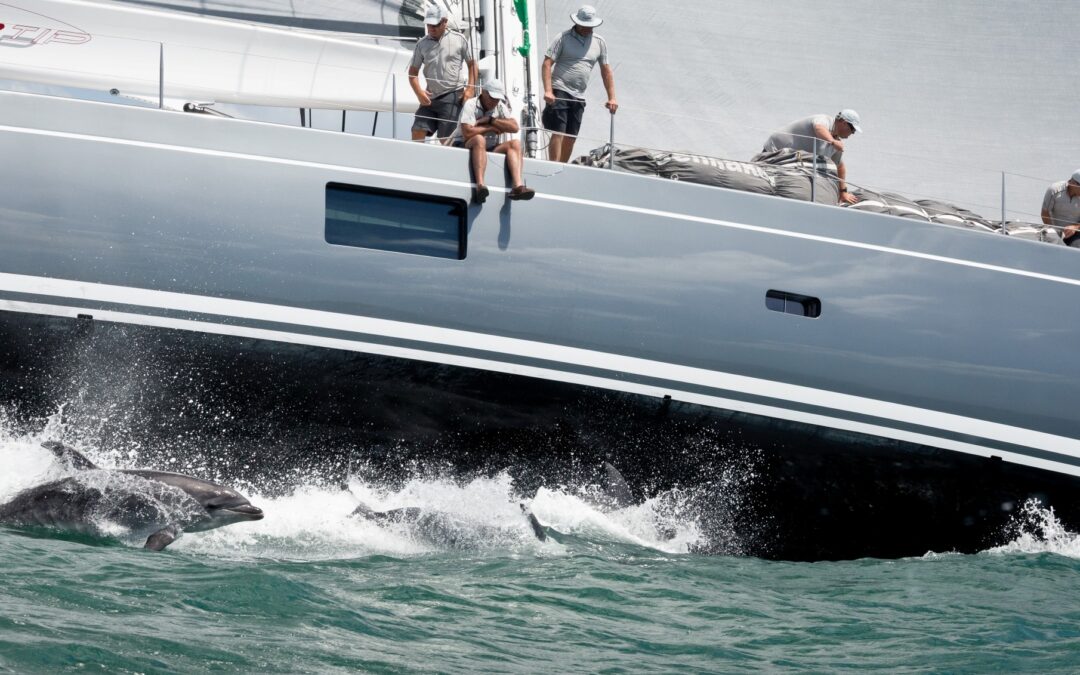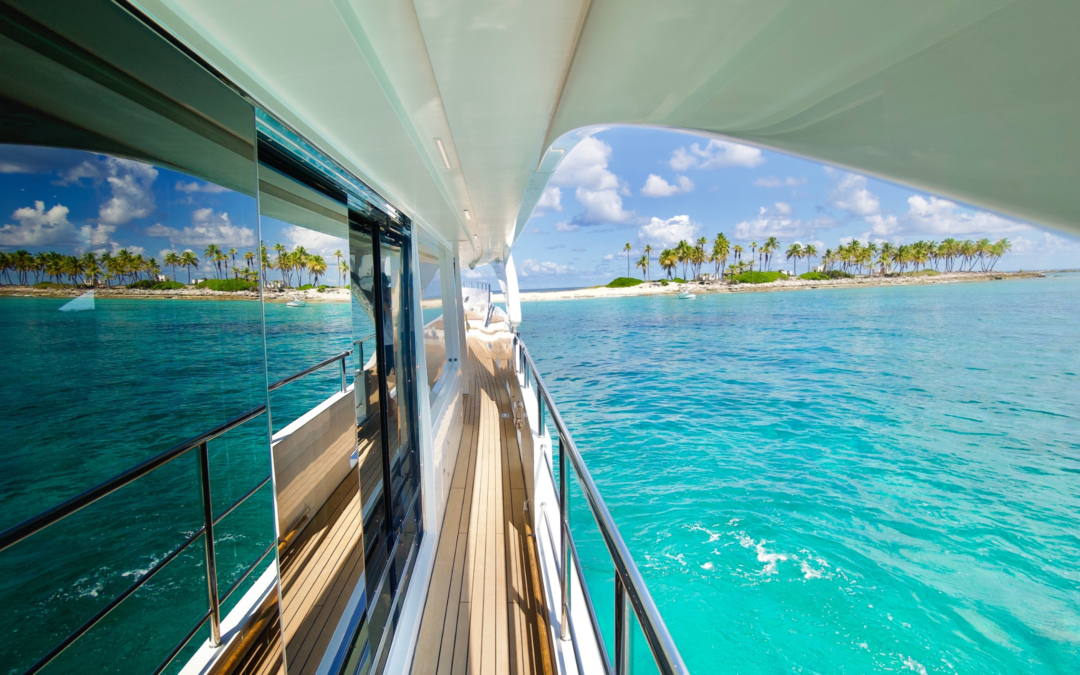
EU Sustainability Rules Are Changing: What It Means for Yachting
Author: Awwal Idris, Environmental Expert at Water Revolution Foundation
Update as of 18 April 2025
On 3 April 2025, the European Parliament approved the first part of the EU Omnibus Package, voting by a large majority to delay the application of new corporate sustainability reporting (CSRD) and due diligence (CSDDD) requirements. This “Stop-the-Clock” directive postpones CSRD reporting for the second and third wave of companies by two years, and delays the due diligence obligations under CSDDD by one year. The directive now requires formal publication and must be transposed by EU member states into national law by 31 December 2025. The focus will now shift to the second stage of the Omnibus Package, which aims to further simplify and revise the scope and content of sustainability reporting rules.
The EU sustainability regulations strongly revised in 2025
The European Commission (EC) is scaling back sustainability reporting rules with two new proposals: Omnibus Simplification Package I and II, focusing on sustainability regulations for businesses in the European Union. With these proposed amendments, fewer companies will need to report under the Corporate Sustainability Reporting Directive (CSRD) — 80% fewer, to be exact. The Corporate Sustainability Due Diligence Directive (CSDDD) is also being relaxed. Now, companies only need to monitor direct suppliers instead of their full supply chain, and checks will happen every five years instead of annually. These and many other changes made to the original reporting rules are yet to be presented before the EU parliament for further review and negotiations.
Short summary of the proposed amendments
Deadlines have been pushed back:
- Large EU companies now report in 2028 instead of 2026. Previously, the CSRD applied to companies with 250+ employees, but now only those with over 1,000 employees – with either a turnover of above €50 million or assets of € 25 million – are required to comply. Companies with 500-999 employees are now excluded from mandatory reporting.
- Listed SMEs also get an extension, with mandatory first reports now due in 2028 (FY 2027). The new deregulation completely removes them from mandatory reporting after that, meaning they will not have to report at all unless they choose to opt in voluntarily.
- Some due diligence rules under CSDDD have been delayed by a year. EU Companies with 5,000+ employees and €1.5 billion turnover will now comply from July 2028 instead of 2027. Those with 3,000+ employees and €900 million+ turnover will start in 2029 instead of 2028. The timeline for other in-scope companies is unclear but if the pattern holds, it could be pushed to 2030. Under the new deregulated rules, the CSDDD, which would have originally applied to almost 50,000 EU companies, will now only apply to around 6,000 large EU companies and some 900 non-EU companies.
- For non-EU companies, the reporting deadline remains: under the CSRD, non-EU parent companies with a large EU branch or subsidiary must report in 2029 based on their activities in 2028. Under the original regulation, this applies if the whole group turn over €150 million or more in the EU. The new rules would raise this threshold to €450 million, so fewer companies would need to report. There is no 1,000-employee rule for EU branches or subsidiaries of non-EU companies. Instead, EU turnover is the main factor because most employees of non-EU companies work outside the EU.
The EC expects these changes to reduce administrative burdens by 25% overall and by 35% for SMEs by the end of its mandate, enabling competitiveness for EU companies and simplify investment programs.
What This Means for Yachting and EU-based Marine Industry
For the European-based superyacht industry, this will mean less pressure to comply… or an opportunity to redirect our efforts from compliance to solving the true issue: the industry should look beyond regulations to drive progress. Climate change and environmental degradation remain existential threats to Europe and the world, and deregulations do not change the scientific reality. The need to reduce environmental impact has not disappeared, and businesses will still need to track progress, set targets and work toward long-term climate neutrality by 2050, whether they are in scope of reporting or not.
Opportunity for an own target-oriented approach
Water Revolution Foundation thus calls on the industry to be pro-active and lead the way towards better future business. This opportunity to define a common goal is the basis of our cooperative Roadmap 2050, driving companies, stakeholders, and organizations to take collective responsibility towards net-zero environmental impact in the superyacht sector by 2050. At the same time, the roadmap aims to also promote the regenerative approach—going beyond reducing harm to creating a positive environmental impact. As regulations loosen, this roadmap becomes ever important as a guide to help the industry meet its targets.
Beyond compliance, these new changes create an opening for self-regulations and industry-led standards. A long-standing complaint in the yachting industry has been that regulation doesn’t account for yachting’s unique characteristics: now with less regulatory pressure, the industry can take charge, setting its own sustainability benchmarks that truly reflect its needs. Instead of waiting for restrictive policies, when these are weak or evolving, scientific data and best practices become the guideposts towards ensuring credibility and competitiveness in a market that increasingly values transparent sustainability. To stay ahead, companies should collaborate to:
- Develop and rely on best sustainability science and practice to ensure meaningful progress
- Engage with industry groups to create shared standards that suit yachting while meeting or surpassing global environmental expectation
- Leverage independent review mechanisms that make sure sustainability claims and investments are credible and actually contribute to positive environmental change.
Staying Ahead
A future tightening of rules is probable if we are to meet the climate targets and environmental ambitions set by 2050. These deregulation actions by the EU may reinforce the perception that sustainability reporting is an administrative burden and overhead cost for businesses, but those able to prioritize environmental responsibility see real benefits:
- Lower risk and better efficiency over time: compliance takes effort at first, but costs drop as businesses improve their systems
- Stronger trust from investors and customers
- Future-proofing against new regulations and market shifts.
Future-proof yachting depends on sustainability
Looking at sustainability as just a regulatory headache is short-sighted – beyond rules, it’s a growing demand from clients, investors, and the industry itself. Clients, especially the new generation cohorts expect more eco-friendly options, and voluntary sustainability efforts can boost reputation and business appeal. Furthermore, a generational shift is also underway—those poised to take over key roles in the industry are far more committed to sustainability and will likely remain engaged in yachting only if environmental responsibility is embedded in its core values. If the industry hopes to attract and retain the next generation of talent, regressing on sustainability efforts is not the way forward. Instead embedding sustainability into the core of the industry will ensure its long-term relevance and vitality in a changing world.
Don’t Wait—Lead
The yachting industry has a unique opportunity to lead by example, proving that economic strength and sustainability go hand in hand. If simplification is pursued purely as means to reduce compliance costs, there is a risk of weakening any needed and essential sustainability progress and/or innovations that can drive accountability and long-term industry resilience. Sustainability isn’t just about ticking boxes – it improves decision-making and competitiveness, and overall protection of the environment our industry depends on. Thus the industry should not look to only comply with regulations: they should lead and define the future of the industry.





